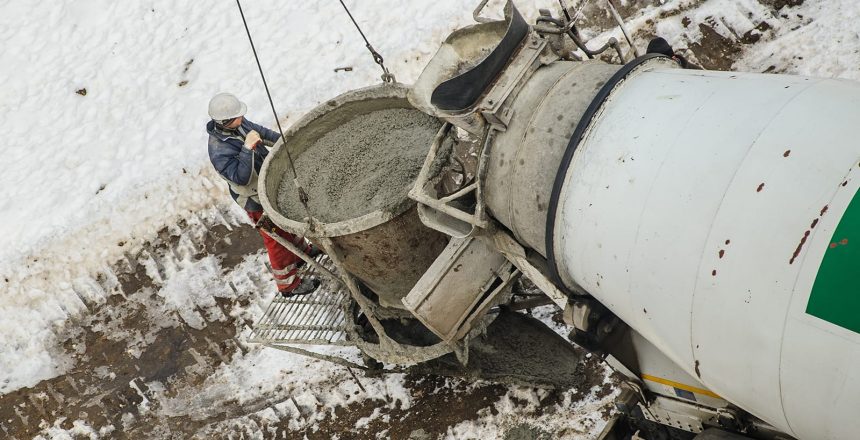Frigid temperatures are usually enough to shut down many operations. However, pouring concrete is not one of those jobs. When winter hits, construction can still continue with proper planning, and protecting concrete in cold weather is possible by following a standard set of guidelines.
Regarding the phrase “cold weather,” when it refers to low temperatures and pouring concrete, there are actually specific conditions that must occur. The American Concrete Institute states that the conditions of cold weather concrete exist when temperatures are expected to fall below 40 degrees Fahrenheit during the protection period. The protection period refers to the recommended time to prevent any adverse effects on concrete that would be caused by exposure to cold weather during construction.
An advantage to pouring concrete in cold weather is that it has the chance to develop more strength than compared to warm weather. Placing concrete in cold weather still allows it to develop the strength and durability when it is properly proportioned, placed and protected. Protection and temperature are inversely connected, so as the temperatures get lower, the amount of protection required is higher.
If concrete freezes (25°F), it will harm the integrity of the project. Extreme cold can disrupt the mass and cause permanent impairments to the strength and effectiveness. To prevent damage during the early stages, concrete needs to be protected from a single freezing cycle until a compressive strength of 500 psi is developed. If the concrete is exposed to cycles of freezing and thawing, protection must last until a compressive strength of 3,500 psi.
Because cold temperatures are also associated with low humidity and dry air, when concrete is protected beyond the first day, it is important to keep the concrete from drying. The combination of the dry air and heated enclosure can rapidly dry concrete.
There are a couple steps to keep in mind when placing concrete in cold temperatures, and the first step should be to define the strategies to be used and create a schedule for the job. Keep a detailed record of temperatures, both exterior temperature and the concrete temperature.
When the time comes to pour the concrete, make sure that the ground is not frozen, and do not pour over snow or ice. Use heaters to thaw the ground before pouring concrete, and if heated enclosures are going to be used, they must also be weatherproof and windproof.
To reduce bleeding and setting time, it is recommended that the concrete has minimal water to cement ratio, and do not begin the final operations if bleed water is present. Also, do not seal freshly placed concrete until it has bleed and the setting process has begun.
A big reason to have temperature records and heating equipment is because if fresh concrete is frozen in the first 24 hours after it has been poured, then it could lose up to 50 percent of its strength. Maintain the temperature of the concrete above 40 degrees in the first 24 hours, and for another four days after using blankets or other heated enclosures.
Pouring concrete and repairing concrete can both be done in cold temperatures as long as all the recommended steps are followed. To get a quote on for concrete repair, call DC Byers Company/Grand Rapids today at (616) 538-7300. Our experience and expertise allow us to assess the damage correctly and plan how to perform the repairs to allow you to use your space properly.
